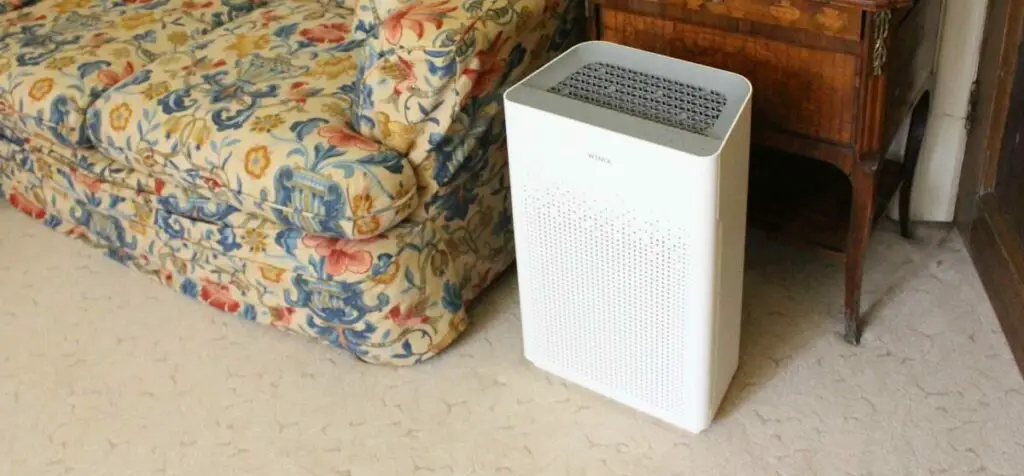Some of the terminology surrounding air purifiers is not clear. The terms “air purifier”, “air cleaner”, “air sanitizer” and “air filter”, are all used when referring to a portable machine that will remove unwanted elements from the air. This leads to confusion, so let’s try to sort it out.
So what does the EPA say on the matter? In “Residential Air Cleaners a Technical Summary” 2018, the EPA include the following statement –”Portable air cleaners are stand-alone units that must be plugged in and turned on to operate. Portable air cleaners are also commonly called air purifiers or air sanitizers.”
As a general rule the term “air purifier” is equivalent to “portable air cleaner”. So an “air purifier” is really a subset of the category “air cleaner”, an example of a non-portable air cleaner would be an HVAC system.
Air purifiers are special in that they are the air cleaners that give the very highest quality of air far far better than any other type of air cleaner.
In 98% of areas of the United States for which there is data the levels of fine particles are above current WHO safe guidelines. The evidence for particle damage to health is absolutely overwhelming and includes heart attacks, strokes, cancer, brain damage, premature death and quite possibly even accelerated aging. Please see this article-The Health Effects of Airborne Particles and Chemicals.
The most effective air purifiers are those with fibrous filters, ideally a true HEPA filter and a fan to push the air through the filter. This is because the most damaging thing in the air for human health in the vast majority of areas is the amount of airborne particles. Of course it is also good to remove chemicals from the air at the same time as air is flowing through the air purifier with an activated carbon filter.
There are 2 important and distinct aspects of an air purifier-
i) Efficiency-the percentage of particles/chemicals removed by the filter
“To use portable air cleaners, furnace filters, or other duct-mounted air cleaners to good effect, it is crucial to understand the difference between two parameters that influence the performance of air-cleaning devices: efficiency and effectiveness. The efficiency of an air-cleaning device is a fractional measure of its ability to reduce the concentration of pollutants in the air that passes once through the device. The fractional efficiency of a device is measured in a laboratory, where all relevant variables are controlled.”
–EPA Guide to Air Cleaners in the Home, 2nd Edition, August 2018 and their 3rd Edition, August 2018, Residential Air Cleaners, a Technical Summary

ii) Effectiveness-the amount of air that can be processed per unit time (usually specified as per hour-CADR)
“The effectiveness of an air-cleaning device or system is a measure of its ability to remove pollutants from the spaces it serves in real-world situations. The most helpful parameter for understanding the effectiveness of portable air cleaners is the clean air delivery rate (CADR), which is a measure of a portable air cleaner’s delivery of relatively clean air, expressed in cubic feet per minute (cfm). The CADR is a product of the fractional removal efficiency for a particular pollutant and the airflow rate through the air cleaner.”
–EPA Guide to Air Cleaners in the Home, 2nd Edition, August 2018 and their 3rd Edition, August 2018, Residential Air Cleaners, a Technical Summary.
When you buy an air purifier it is easy to get the efficiency right simply by buying a true HEPA air filter and one with a reasonable carbon filter. It is more difficult to get the effectiveness correct as usually the manufacturer will only give you the CADR on the the air purifier’s maximum setting. So you get the air purifier home and find that it is too loud in your room on its maximum setting! So now you have to switch it down to a CADR/airflow which you have no idea whether or not it is enough tor the room.
There is more about choosing an air purifier in this article –Buying an Air Purifier
Air Purifier Vs Air Sanitizer
Occasionally people will refer to an air sanitizer. Santization is defined as ” The process of making something sanitary, as by cleaning or disinfecting” and sanitary is defined as “of or relating to health or the conditions affecting health, especially with reference to cleanliness, precautions against disease”, In the context of appliances treating the air it usually refers to removing infectious agents such as bacteria and viruses from the air.
So a device can sanitize the air by inactivating any microorganisms, without cleaning it of the noninfectious particles and chemicals.
So as a general rule an “air sanitizer” is different from an air purifier as it is designed only to inactivate microorganisms in the air without removing particles. An example of this would be UV light irradiating the air. If it also removed particles and chemicals from the air the manufacturer would call their device an “air purifier”.
As airborne particles are essentially the most important aspect of air pollution that damages our health, air sanitizers do not fully protect us.
Air Purifier vs Air Filter
Sometimes air purifiers are referred to as “air filters”. However the air filters are also found in HVAC systems so this is not the best way of referring to an air purifier. An air filter is a component of an air purifier, the other main components being a powerful fan and an airtight casing.
So an air filter is only one component of an air cleaning system..
Air Purifier vs Air Scrubber
It is not quite what clear people mean by “air scrubber”. Usually when people refer to scrubbing this involves using water and some agitation to clean something. There is a type of humidifier called an “air washer” this is an impeller humidifier in which droplets of water thrown into the air by a wheel as in the diagram below –

However this does not remove a significant proportion of either particles or chemicals from the air. So it seems that when people refer to air scrubbers they are in reality talking about an air purifier.
Air Purifier vs Air Cleaner a Personal View
I feel it would be helpful to the public to restrict legally the term “air purifier” to those machines that when they supply 5 air changes per hour to a room will reduce particle count by at least 80%. Airborne particle pollution is a significant health hazard and the public need some clarity about the effectiveness of appliances that they may buy in protecting their health.
Some current air cleaners/air purifiers, even costing more than $500, will do virtually nothing to protect human health and others protect health much less than people would assume. If the term “air purifier” were restricted to machines that have the potential to be effective, that would be a good start.
Of course, by having too low an airflow for the room size, even a potentially effective air purifier can be rendered ineffective.
So this topic of Air purifier vs Air Cleaner is not just academic as the term “air purifier” could be used specifically to help protect the health of the public. At the moment, a complicated and confusing market place of different manufacturer’s claims can potentially lead people to make the wrong choice. Having made the wrong choice, their long-term health may suffer needlessly as they could have spent the same money buying an effective air purifier.
Summary
An “air purifier” is currently simply a portable air cleaner. This encompasses many types of air cleaner. To be effective, it should have a fibrous filter, such as a true HEPA filter, a fan to keep the air flowing through the filter and being processed and an airtight casing.
Related Articles



